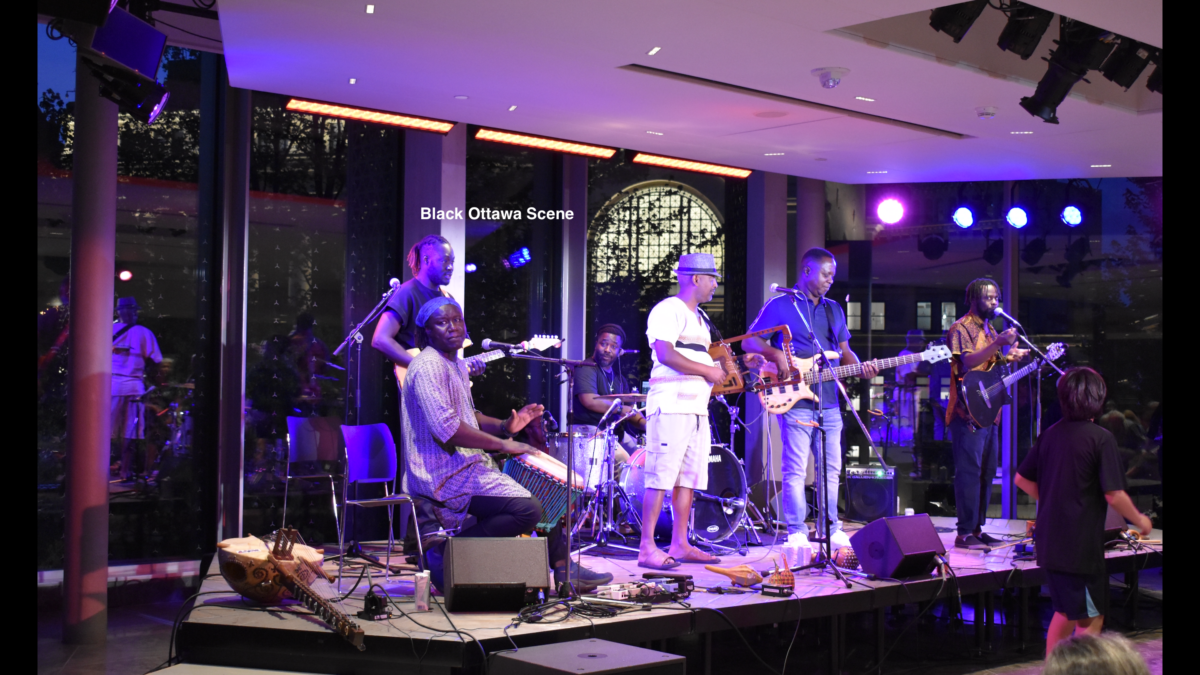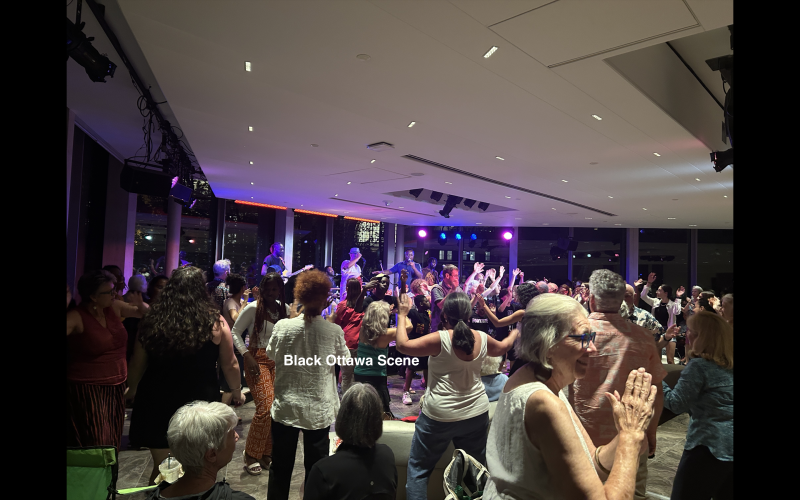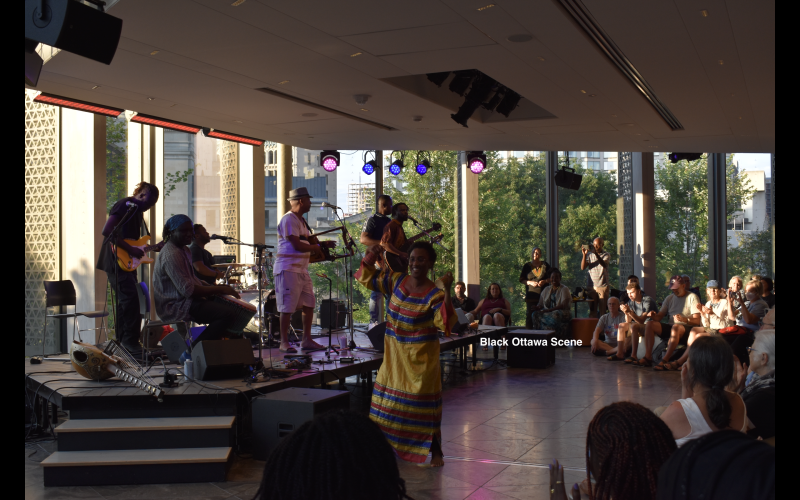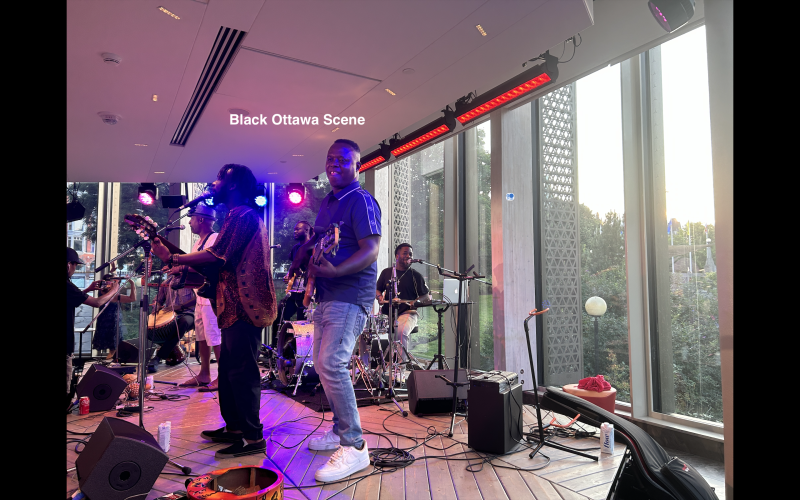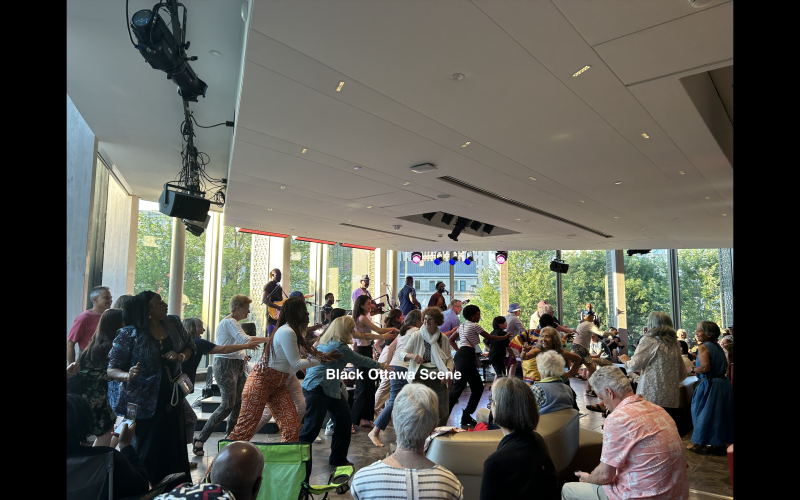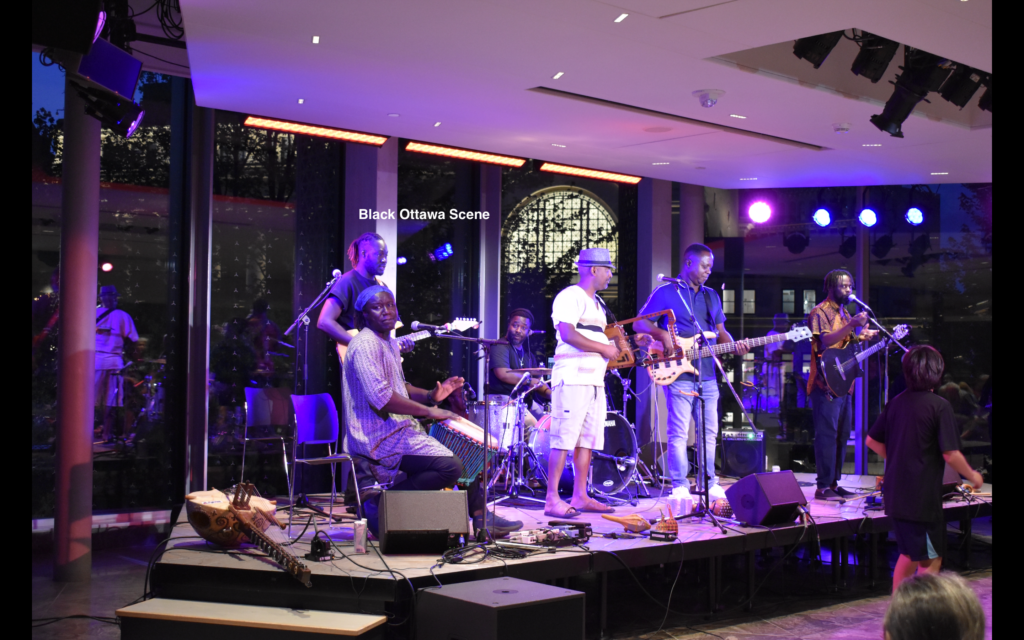
National Arts Centre’s The Feeling of Free Summer series- Okavango African Orchestra
by Olivia Barrett
Tuesday 16 July 2024
The risk of heavy rain did little to deter the excited crowd at the Okavango African Orchestra’s first performance at the National Arts Centre’s The Feeling of Free Summer series.
Their first performance of the festival on July 16 filled the Peter A. Herrndorf Place at the NAC and welcomed audience members of all ages and backgrounds to enjoy their fusion of traditional music and instruments from several African nations, including Zimbabwe, Ghana, Eritrea and Senegal.
Okavango African Orchestra played two 45-minute sets and kept the audience hooked until the very end, with many audience members dancing and clapping along to the beat for nearly every song. The space between the stage and the audience’s seating was filled with audience members dancing to the upbeat and joyful songs from these various nations.
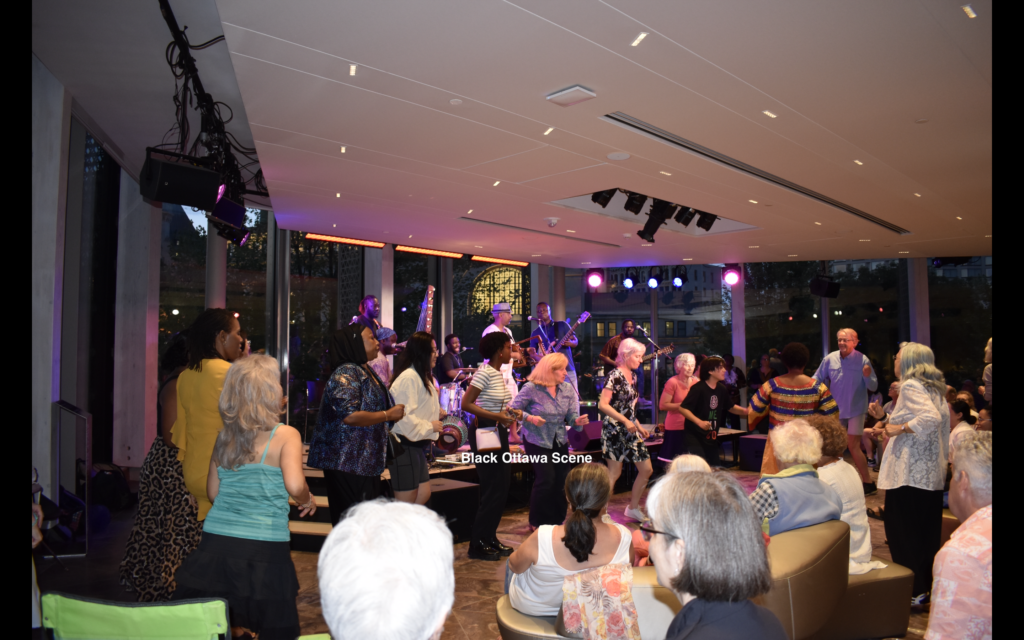
While the audience could dance however they wanted, a member of the band also showed them some moves to go along with the songs.
Throughout the performance, Okavango African Orchestra’s musicians cheerfully engaged with the audience, often calling on their participation. While not unusual at musical performances, it seemed to encourage more audience members to clap or join in on the dancing. This made the performance flow together seamlessly and ensured that the audience’s attention never wavered.
By creating this relationship with the crowd, the musicians were able to impart a little history lesson on the crowd as they spoke about the meanings and cultural ties behind their songs, from childhood memories to the different parts of a celebration.
With band members being from different nations, they gave brief descriptions of the relationship between the song and their culture, as well as a short explanation of the traditional instruments being used. These instruments included the krar and the kora. The krar is a stringed, bowl-shaped lyre from Ethiopia and Eritrea and the kora is a stringed instrument largely used in West Africa.
While similar, these two instruments come from different regions in Africa and their use by Okavango African Orchestra added a special touch to each song they were used in. The band also used both a drum set and a djembe, a traditional drum from West Africa. The musicians created a beautiful harmony between these drums, including a powerful, in-sync finish to their last song before intermission where the drummers played the same beat, making it echo for their finale.
Okavango African Orchestra fulfilled the promise stated by their emcee at the beginning of their performance: they truly are a band that brings people to dance.
Okavango African Orchestra is a Juno Award-winning group made up of several instruments, languages, cultures and countries. They combine the traditional musical stylings of East and West African cultures that typically have little interaction with each other. In the group’s description on the NAC’s website, it explains that these artists represent a “continuum of traditions and cultures from time immemorial to the present day.”

